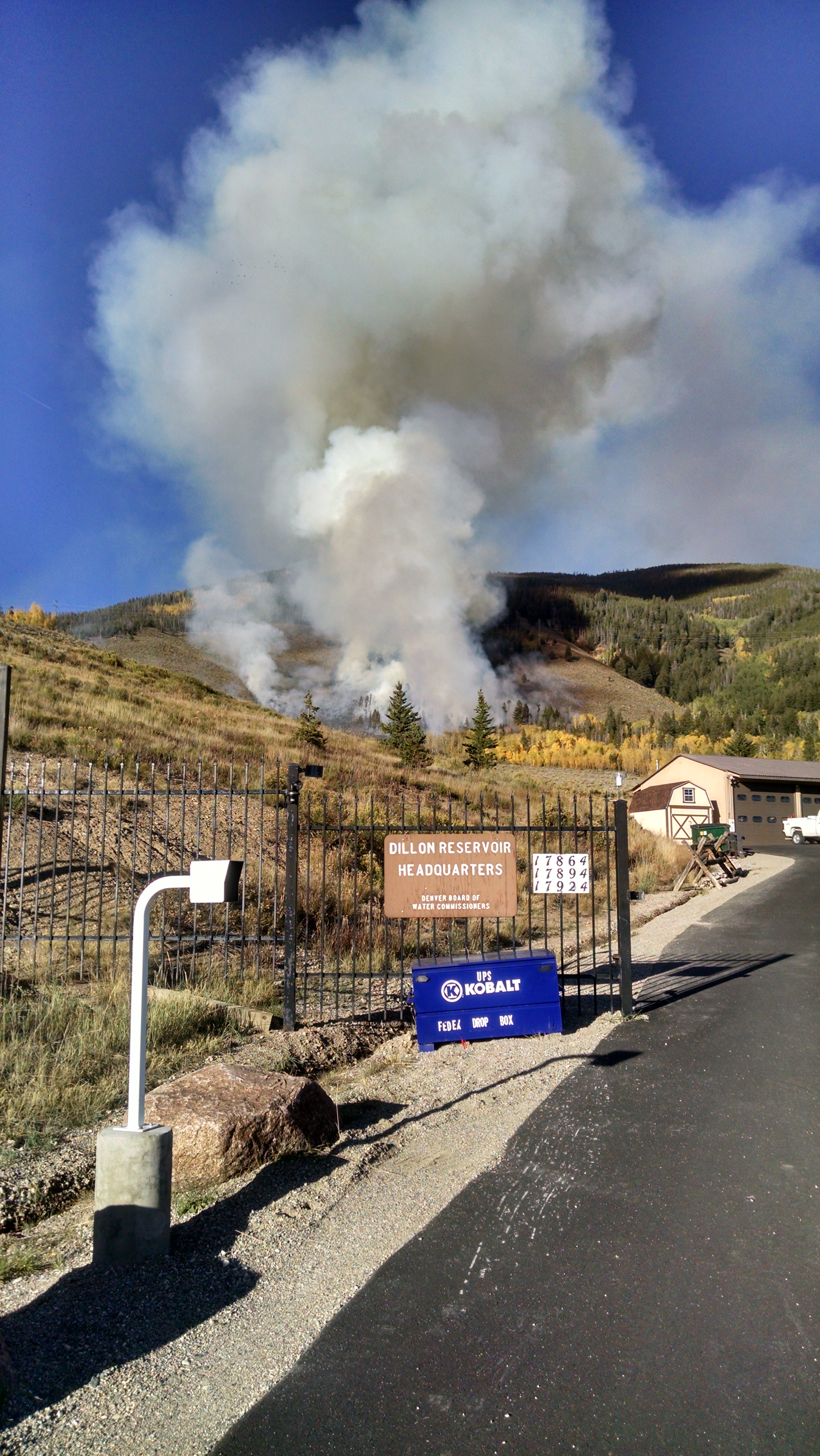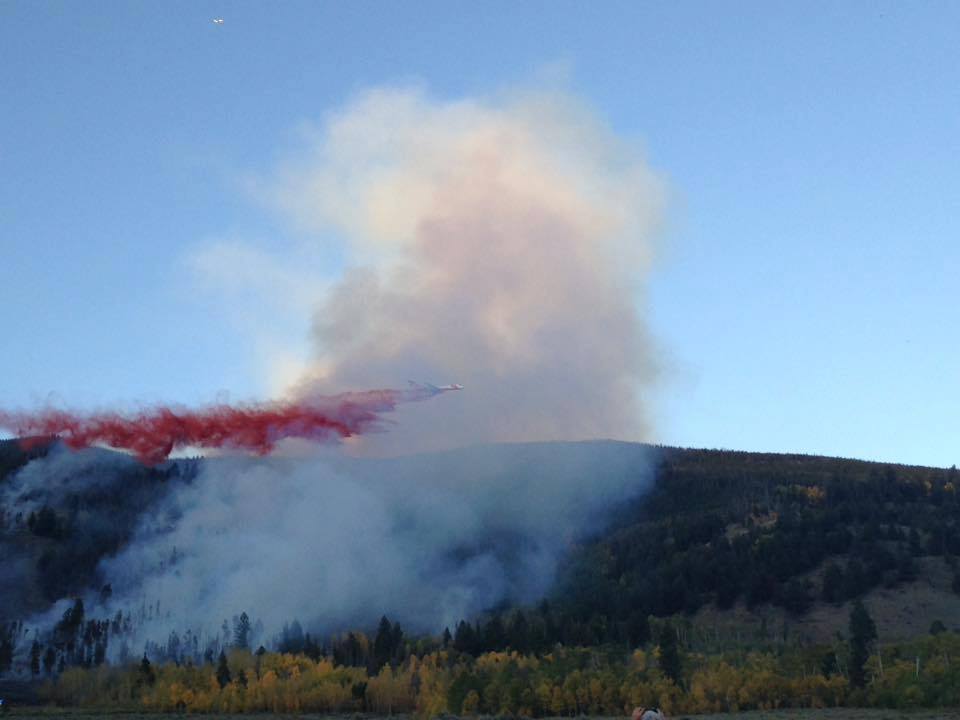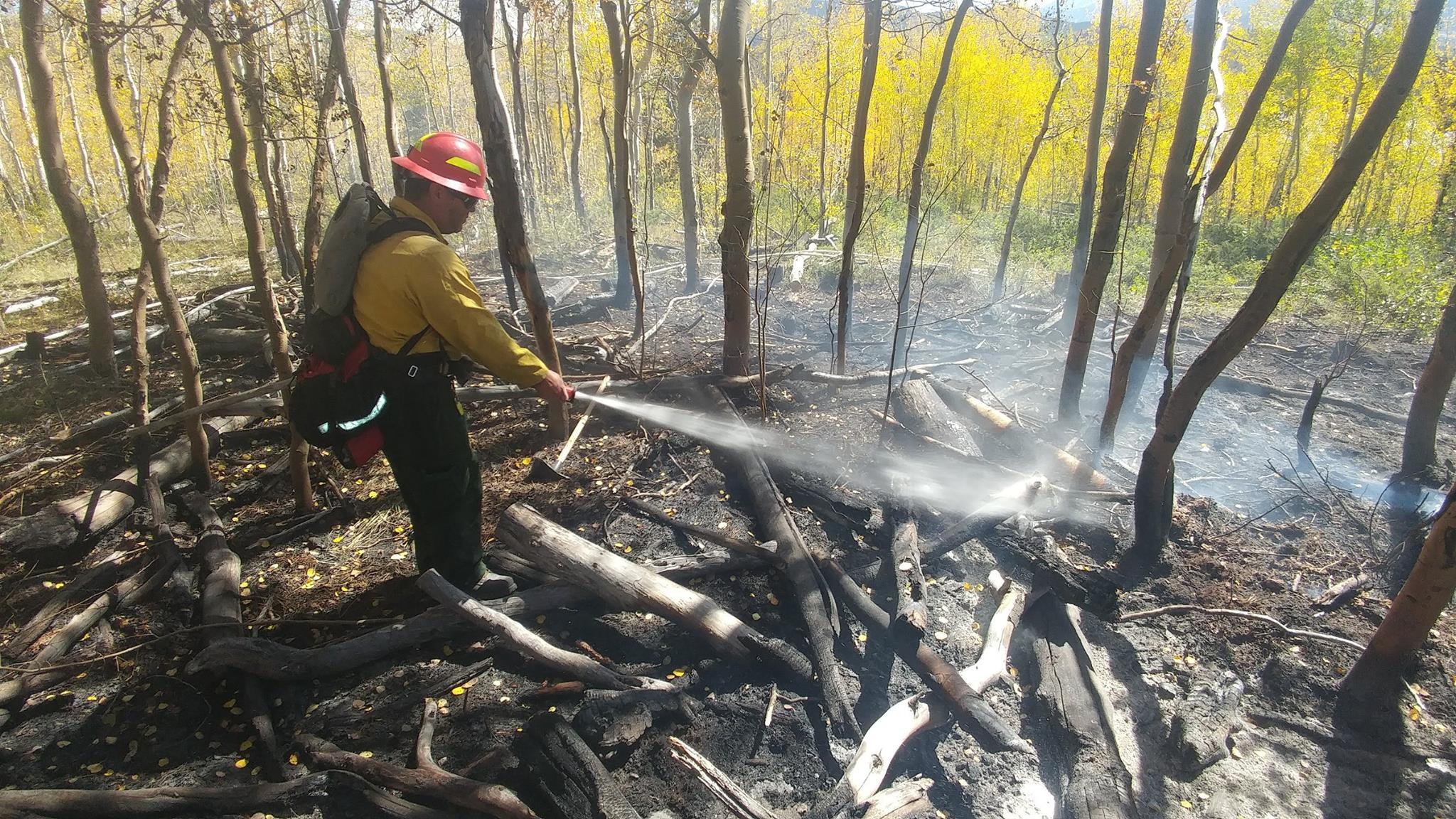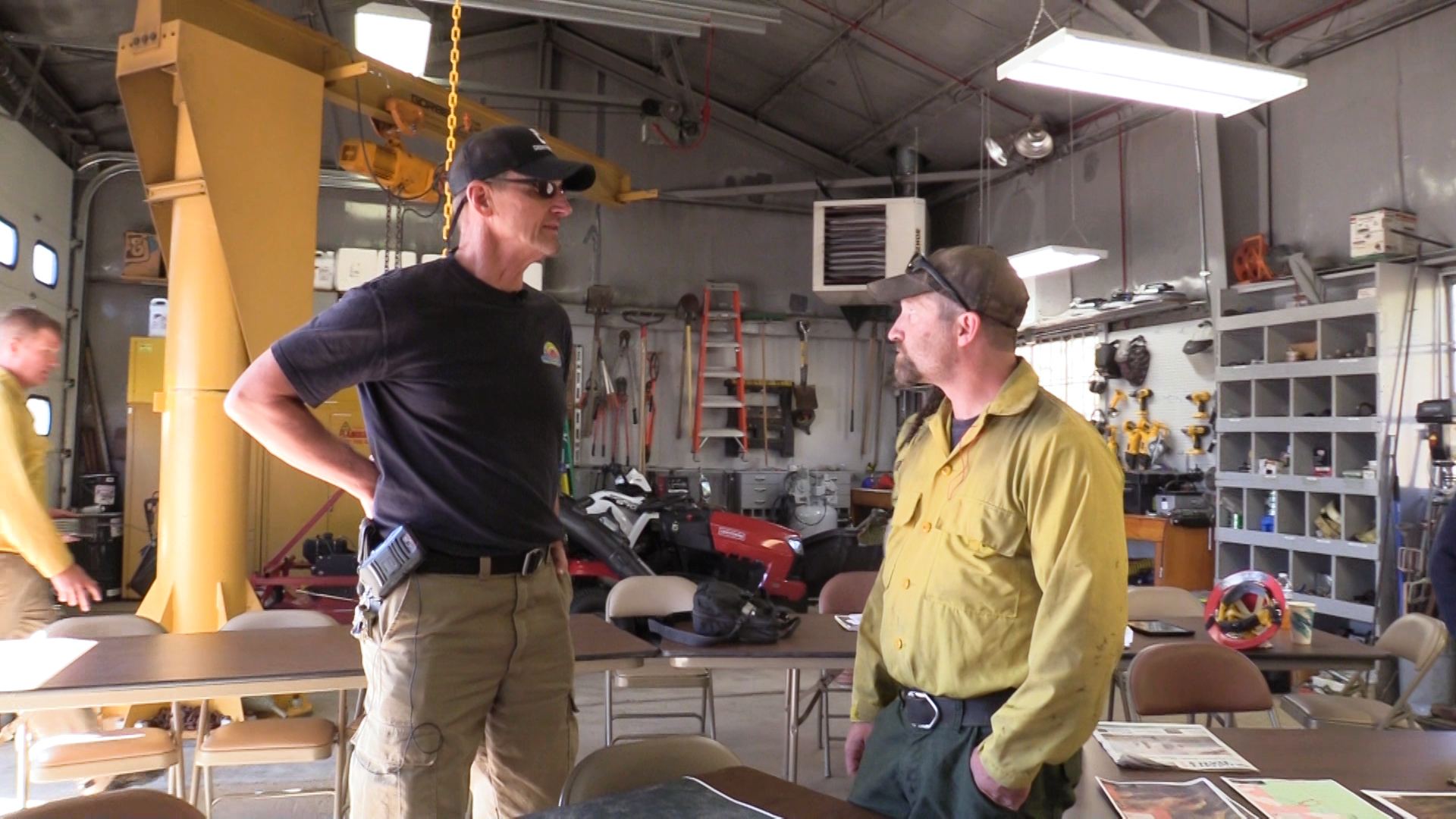
Dillon wildfire hits close to home
Helicopters, air tankers and firefighters put on a show of force in Summit County this week that prevented a wildfire from turning into a major disaster.
Firefighters managed to hold the Tenderfoot 2 fire to 25 acres after it threatened Denver Water’s Dillon Dam headquarters and a number of homes on the northeast side of Dillon Reservoir.
“We’ve seen our share of wildfires here in Summit County, but this one was close,” said Rick Geise, hydropower operator at Dillon Dam.
Investigators say the fire started Sept. 18, when sparks from a blown insulator cap on a power line ignited dry grass on U.S. Forest Service land on Tenderfoot Mountain.
Flames spread to nearby lodgepole pine trees, and smoke billowed into the sky above Denver Water’s operational facility.
Geise said a motorist on Colorado Highway 6 saw the smoke and alerted Denver Water staff at the headquarters.
“We immediately called 911, and fire crews were on scene within minutes,” Geise said. “It was quite a sight seeing all that smoke above us.”
Geise worked with Lake Dillon Fire and Rescue to set up an incident command post at the Denver Water office for fire personnel and their equipment.
“Our four-man crew here at Dillon prepares for these types of events,” Geise said. “We have a good working relationship with the local fire department and the Forest Service, so we were ready.”
Fire commanders called in two heavy air tankers and two helicopters to provide aerial support to prevent the fire from spreading up the mountain.
“We have regular emergency training exercises with Denver Water,” said Jeff Berino, Lake Dillon Fire and Rescue fire chief. “Our training in the past helped tremendously during the fire.”
Geise is part of the team that operates Dillon Dam and is also a member of Denver Water’s strike team — an all-hazard group of six employees with specialized wildfire and incident management training.
During the fire, Geise acted as incident commander for Denver Water.
“My job isn’t to fight the fire, but to act as Denver Water’s point person to coordinate efforts between the organization and fire officials during emergencies,” Geise said.
One hundred and twenty firefighters hiked up the mountain to build fire lines, cut down trees and carry fire hoses, while helicopters scooped up 74 buckets of water from Dillon Reservoir to douse the fire.
“Having the reservoir so close helped crews get the upper hand on the fire,” Geise said.
Despite wind gusts up to 50 miles per hour on Sept. 19, crews kept the fire from spreading. Residents were urged to remain vigilant and watch for hot spots until rain and snow move in to fully extinguish any remaining hot spots.
“Training and preparedness are huge during emergencies,” Berino said. “Figuring out logistics, contingency plans, rules of engagement and the whole planning process are critical to successful incident management.”
“The key here is relationships,” said Bill Jackson, White River National Forest, Dillon District Ranger. “As we have seen on this fire, and during past fires, the local engagement and the emergency response is phenomenal.”
The fire came within 100 yards of Denver Water’s property line and did not impact operations at Dillon Dam, which is located on the other side of the reservoir.
“Hats off to the firefighters,” Geise said. “They did a great job on this fire, and we thank them for all their hard work.”




